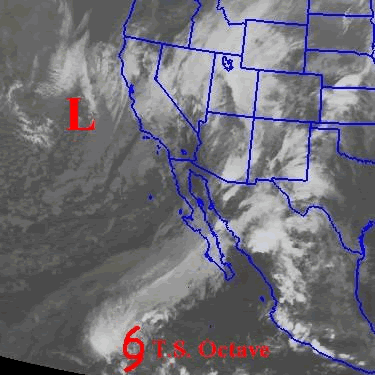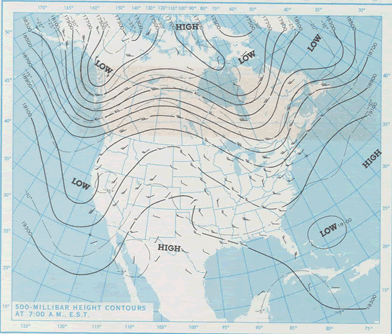Tropical information for southeast Arizona
|
||||||||||||||||||||||||||||||||||||||||||||||||||||||||||||||||
| Below is a listing of storms that made significant impacts to parts of Arizona | |
Data courtesy of https://coast.noaa.gov/hurricanes/
| Tropical Storm OCTAVE 1983 | |
| Forty-two years ago, southeast Arizona experienced perhaps its worst weather-related disaster in recorded history. The Flood of 1983 killed 13 people and injured hundreds in a five-day period. Dozens of homes, businesses, roads and bridges were destroyed or heavily damaged in the Tucson Metropolitan Area alone. The towns of Clifton, Duncan, Wilkleman, Hayden and Marana were almost entirely submerged by flood waters. Over 10,000 people were driven from their homes. Over 1300 homes were either destroyed or heavily damaged. Total damage across Arizona reached $500 million in 1983 dollars, which today translates to a little over $1 billion. | |
| However the California low pressure stalled just west of the California coast, and funneled almost all of the remnants of Octave northeast into the southeast half of Arizona (Graphic 3). | |
| Click on image below for a satellite loop from the evening of September 29, 1983 to the morning of September 30, 1983. | |
 |
|
| Graphic 3: Satellite image of T.S. Octave and incoming low pressure system, 500pm MST, September 29, 1983. The first of three rounds of very heavy rain was already drenching southeast Arizona. | |
| Thunderstorms associated with Octave began on September 28, although most of the initial rain was spotty. On the afternoon of the 29th, the first of three waves of heavy showers and strong thunderstorms swept across southeast Arizona. There was a break on the 30th, but soon after midnight on October 1st, a steady, drenching rain developed over southeast Arizona which continued through mid morning. The flooding, which up until that point had been rather isolated, quickly turned serious and widespread. River bank erosion began to cut into bridge pilings, homes and businesses. Virtually every low water crossing in Tucson flooded as police and fire departments struggled to respond to hundreds of requests for help. A third round of very heavy rain swept across southeast Arizona in the early morning hours of October 2nd, which sent most river gaging points along the Santa Cruz, Rillito, and Gila Rivers to their highest crests and flows on record. | |
| As bad as it was, the Flood of 1983 could have been even worse. Just a few days after Octave, Hurricane Priscilla developed off the west coast of Mexico, and for a time on October 4th and 5th, threatened to follow almost the same path as Octave into Arizona. Fortunately, Priscilla weakened more rapidly than Octave did, her moisture did not become ingested into another incoming storm system, and she dissipated harmlessly about 120 miles west of Baja California. | |
|
Despite its inland location, decaying tropical depressions move off the tropical Eastern Pacific into southeast Arizona about once every 5 years, and five systems have even made it into southern Arizona as tropical storms since 1965 (Katrina, 1967; Joanne, 1972; Kathleen, 1976; Lester, 1992; Nora, 1997). |
|
| Date | [Sep 26] [Sep 27] [Sep 28] [Sep 29] [Sep 30] [Oct 1] [Oct 2] | |
 |
|
| References:
_____, 2008: NHC Archive of Hurricane Seasons. NOAA/NWS National Hurricane Center, Miami, FL. [Available on line at: http://www.nhc.noaa.gov/pastall.shtml]. Roth, D., 2008: Tropical Cyclone Rainfall Data. NOAA/NWS Hydrometeorological Prediction Center, Camp Springs, MD. [Available on line at: http://www.hpc.ncep.noaa.gov/tropical/rain/tcrainfall.html]. Saarinen, T.F., V. Baker, R. Durrenberger, and T. Maddock, 1984: The Tucson, Arizona, Flood of October, 1983. National Academy Press, Washington, D.C. 112 pp. Sellers, W.D., R.H. Hill, and M. Sandersen-Rae (editors), 1984: Arizona Climate: The First 100 Years. University of Arizona Press, Tucson, AZ. 143 pp. Smith, W., 1986: The effects of eastern north Pacific tropical cyclones on the southwestern United States. NOAA Technical Memo, NWS-WR-197. |
|